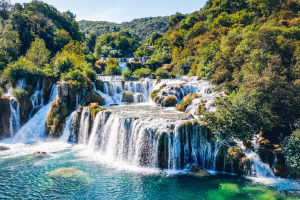Jaipur, often referred to as the Pink City, is the capital of Rajasthan and a cornerstone of India’s cultural and architectural heritage.
With its blend of royal palaces, bustling bazaars, and intricate sandstone structures, the city is a captivating destination for travelers in 2025.
This guide outlines everything needed for a well-prepared and meaningful visit!
1. Best Time to Visit
The most pleasant months to explore Jaipur are from October to March. Temperatures remain between 55°F and 80°F, allowing visitors to comfortably explore outdoor attractions. The clear skies during this season also make for excellent photography and walking tours.
2. How to Get There
Jaipur is accessible via domestic flights, long-distance trains, and buses from major Indian cities. From the airport to the city center, expect to pay between $6 to $10 for a taxi or ride service. Prepaid cabs are available at the terminal exit and are recommended for fixed pricing.
3. Must-See Attractions
Amber Fort: Located on a hilltop around 7 miles from the city, this fortress features vast courtyards and intricate mirror work. Entry is around $8.
City Palace: Still partially a royal residence, this palace showcases Rajput and Mughal design, with tickets priced at $10 for museum access.
Hawa Mahal: Known for its honeycomb windows, this structure offers views of the streets below for an entry fee of about $2.
Jantar Mantar: A historic astronomical observatory, it charges $3 and provides insight into ancient scientific practices.
4. Getting Around Jaipur
Travel within Jaipur is convenient with options such as auto-rickshaws, taxis, and private rentals. Short rides typically cost $1 to $3, while a full-day hired car ranges between $25 to $40 depending on the vehicle type and travel distance.
5. Accommodation Options
Jaipur caters to all budgets. Basic guesthouses start at $15 per night and often include breakfast. Comfortable mid-range hotels offer modern amenities and heritage décor for $40 to $65. Upscale accommodations often feature historic architecture, with prices starting at around $100.
6. Local Cuisine and Dining
Jaipur’s culinary offerings are rooted in local tradition. Popular dishes include dal baati churma, gatte ki sabzi, and bajra roti. Affordable meals from street vendors cost about $2 to $4, while multi-course meals in traditional restaurants range from $8 to $20. While the city is predominantly vegetarian, meat options are available in select areas.
7. Cultural Etiquette
Respecting local customs enhances the travel experience. Visitors should dress modestly, especially at historic sites. Removing shoes before entering temples is customary. It’s also courteous to ask before photographing people, especially in rural or traditional areas.
8. Safety and Health Tips
Jaipur is generally safe for tourists, but standard precautions are advised. Carrying bottled water, using insect repellent, and choosing freshly prepared foods can help prevent minor health issues. Wearing sunscreen and comfortable walking shoes is essential, particularly when visiting forts or outdoor markets. It’s wise to keep emergency contact details and copies of travel documents handy, and to secure comprehensive travel insurance for any unforeseen incidents.
Jaipur in 2025 offers more than iconic landmarks—it promises a deep connection with India’s royal past and everyday culture. Whether wandering through palace corridors, enjoying the vibrant chaos of local bazaars, or savoring authentic Rajasthani dishes, each moment here contributes to a truly enriching journey. This guide serves as a foundation for safe, respectful, and fulfilling exploration in one of India’s most storied destinations!


